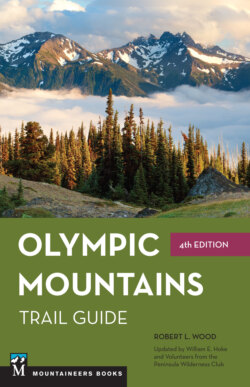Читать книгу Olympic Mountains Trail Guide - Robert Wood - Страница 20
На сайте Литреса книга снята с продажи.
FISH
ОглавлениеThe rivers, creeks, and lakes in the Olympic Mountains contain many kinds of fish. Each fall and winter, salmon and steelhead (an ocean-going rainbow trout) fight their way up the rivers to spawn, forcing passage through rapids and cascades in accordance with their instincts. The Native Americans and the pioneer settlers depended upon the fish for food. The rich red flesh was eaten fresh when the salmon were running, and great quantities were dried and smoked for use at a later time.
Several rivers on the peninsula have been dammed, either to generate electricity or for flood control. As a consequence, salmon and steelhead are no longer found in the streams above the obstructions. The most notable example is the North Fork Skokomish, but dams are also located on the Big Quilcene and the Wynoochee. Two dams on the Elwha River have been removed so that this once great salmon stream can be restored to its natural state as a splendid breeding ground for fish. Deconstruction of the Glines Canyon and Elwha dams began in 2011 and was completed in 2014.
Trout are found in the mountain streams and lakes. The varieties include cutthroat, rainbow, Eastern brook, and steelhead. The regulations regarding fishing change from time to time; therefore, anglers should check with the National Park Service or the US Forest Service—whichever agency is the appropriate one for the particular occasion—before indulging in this sport.
During the pioneer years the rivers and creeks had an abundance of fish, far more than they have today, and it was a simple matter to catch large quantities. Many of the mountain lakes were barren, however, until fish were planted in them.
